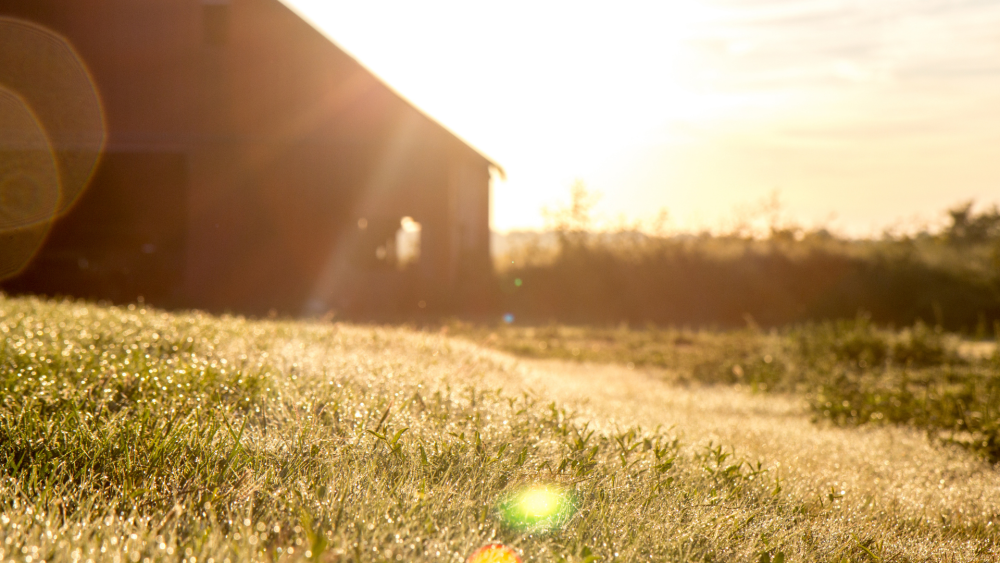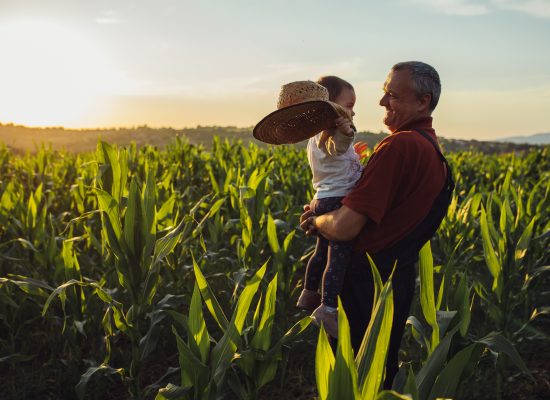Everyone knows that eventually their farm will transition. When that transition occurs will be at different times for different people; for some it may be on their death bed, while for others it will be a step on their retirement journey. The question of when you want to ideally transition your farm is certainly important, but equally important is how you want to transition your farm. For example, let’s follow two different potential situations for a farming family and the outcome of these distinct transitions. In both cases, the farm is owned by John and Mary, who have three adult children; one works on the farm and would be the natural successor, while the other two have no interest in the farm. At age 68 and 64 respectively, John and Mary die suddenly in an accident.
Example 1: No Transition Planning
John and Mary had not started planning for their transition. While they had had informal discussions with the family regarding what would happen and how their one child would continue to operate the farm, no plans were put in place to acknowledge this transition. As a result, upon their passing, an old Will is dug up that mentions that all their assets are to be split equally between their three children. The $25 million farm cannot be easily leveraged, and they are forced to sell all or part of the farm to fund the equalization of the estate. During a highly emotional period, this causes friction among the siblings. The forced sale does not command the best price nor the most tax efficient disposition. John and Mary’s family and farm legacy that they had worked so hard to build is at risk.
Example 2: Transition Planning Considered
John and Mary have planned for their retirement and the staged transition of the farm to their one child. This child has been working the farm for the last 20 years and is clearly a competent operator. Years ago, John and Mary realized that there was a lot of value in their farm and that this value would continue to increase over time. They knew that they wanted to leave this for their one child but at the same time wanted to leave something for their other two children. Working with their accountant, lawyer and financial planner, they put in place the appropriate Wills, tax structures and insurance to ensure that when they passed away, the farm could tax-effectively transition to the one child while ensuring that the other two siblings would be left a meaningful estate as well. This is all communicated through the planning process with the children. John and Mary’s family and farm legacy is strengthened through this well-planned transition.
Recognizing that planning can be daunting and overwhelming to many, in this article, we highlight a few key steps to take when starting the process of transition planning.
1. Take stock of current and future values
It is important to know the value of your farming operations; this includes the value of your land, buildings, inventory, livestock and goodwill as they stand today. You will also want to be able to project these values into the future. Most farmers have a strong idea of their current position but may feel that it is more challenging to predict future values. Scenario testing is applied to ensure a forward-looking valuation can be applied in modelling future values. Future values become very important in longer-staged transitions.
Debt and cash flow analysis can also be very helpful at this stage to ensure that a full picture of risk and financials are understood when discussing potential transitions.
You may need to involve an appraiser at this stage to assist in valuing your farm and farm operations.
Knowing your values is really important when thinking of transitioning to multiple people. Fair does not always mean equitable. For John and Mary’s child who has worked on the farm for 20 years and intends on continuing to do so for the rest of his workable life, he very likely deserves a bigger share of the inheritance as he is contributing to the success and growth of the farm, so it may be unfair to split the farm equally between the three children. In this example, fair and equal are not the same. Before being able to adjust accordingly, it is important to first know what the farm is worth.
2. Visualizing an ideal transition
As illustrated in our above example of John and Mary, it is clear that we don’t always get to live an ideal transition. However, their situation in the second example mapped out what an ideal transition might look like. They were able to take steps to ensure a greater probability of success in transition – regardless of how it came about.
Visualizing the transition includes answering the following questions:
- Who will be taking over the farm?
- What are your personal goals?
- What are your farm goals today and after you transition?
- Is it important to maximize values for you?
- Is it important for the farm name to succeed you?
- Are there personal values that you would like to see maintained in the farm?
- Is it important to create a legacy in the community?
- How can you minimize taxes?
- How do you want to transition the farm in an ideal situation?
- How much income do you need to live on an annual basis?
- What is your life going to look like – how many trips to Mexico will you be taking?
3. Cash flows
Part of the exercise while still involved in the farming operations is to understand your source of cash flow. For some that may be through a single farming operation; for others with more complex organization charts and farms, cash flow can originate from any number of corporations or operations depending on the year. Cash flow can be consistent, or it can vary from year to year depending on the nature of your farming operations.
In transition, cash flow may be diminished as the younger generation starts to live off the farming income as well as the parents. When mapping a longer transition, it is important to ensure that there is sufficient income to continue to support both the exiting party as well as the new entrant.
When fully transitioned, generally, investment assets build up and the proceeds of the purchase will provide the retirement cash flow required to maintain a healthy standard of living. In certain cases, there may be a large up-front injection of capital from the purchase but in most family transitions, this will be paid out over time. Regardless of the approach taken, when transitioning it is important to ensure that you have planned for sufficient savings and cash flow in retirement.
4. Communicate
As you visualize and articulate your plan, it is important to start to communicate it to the next generation to ensure that expectations are aligned; not just your expectations, but also theirs. You may want your children to be involved in the farming operations; however, they may have other plans. The opposite may also be true— you may assume that certain children are not interested, but they may simply have taken a bit longer to figure out that they are interested in certain elements of the farming operation.
The key at this stage is determining and communicating your potential roadmap and the values that are most important to you. Many avoid these conversations because they are afraid of having to commit to a transition before they are ready. However, starting the dialogue and ensuring consistent and open communication does not equate to a formal commitment.
By starting the conversation early, you are also improving the odds of a successful transition as the lines of communication would be well opened by the time you are deep into the transition.
You may go so far as to write down a transition more formally on paper with the use of shareholder agreements; however, there is no need to rush into this until there is a clear roadmap. Rushing too quickly can be as detrimental as leaving this unplanned for too long.
Transitioning a farm, when planned well, is an iterative process that will adapt as the reality of your farm, your personal reality, or the reality of your successor changes.
While John and Mary may not have had a chance to finalize their plan completely, walking down the path early enough can make a dramatic difference to their family and farm legacy.
While it may take time to formalize the plan, it is never too early to start!
Interested in Farm Succession Planning? Follow along as David Szalkai, our Insurance & Estate Planning Advisor, discusses a variety of different topics related to Farm Succession in our new video series.
Access the complete series here.
Tall Oak Capital Advisors is committed to helping you and your family no matter what stage you are at in succession planning. Reach out to us today and see how we can help turn your plan into reality.
The views expressed in this commentary are those of Tall Oak Capital Advisors as at the date of publication and are subject to change without notice. This commentary is presented only as a general source of information and is not intended as a solicitation to buy or sell specific investments, nor is it intended to provide tax or legal advice. Statistics, factual data and other information are from sources Tall Oak believes to be reliable but their accuracy cannot be guaranteed. This commentary is intended for distribution only in those jurisdictions where Tall Oak Capital Advisors are registered. Securities-related products and services are offered through Raymond James Correspondent Services Ltd., member Canadian Investor Protection Fund. Insurance products and services are offered through Gryphin Advantage Inc., which is not a member-Canadian Investor Protection Fund. This commentary may provide links to other Internet sites for the convenience of users. Tall Oak Capital Advisors is not responsible for the availability or content of these external sites, nor does Tall Oak Capital Advisors endorse, warrant or guarantee the products, services or information described or offered at these other Internet sites. Users cannot assume that the external sites will abide by the same Privacy Policy which Tall Oak Capital Advisors adheres to.




